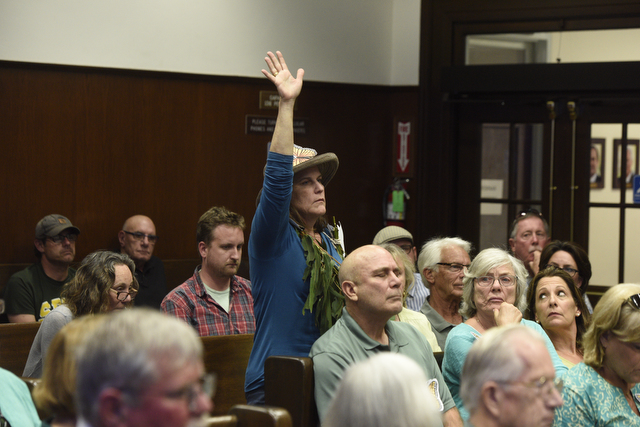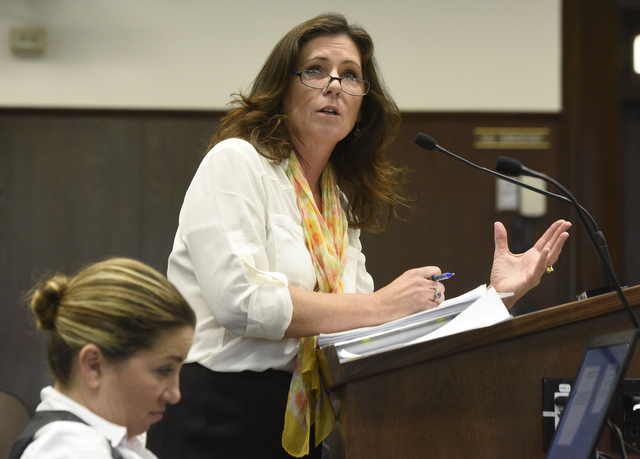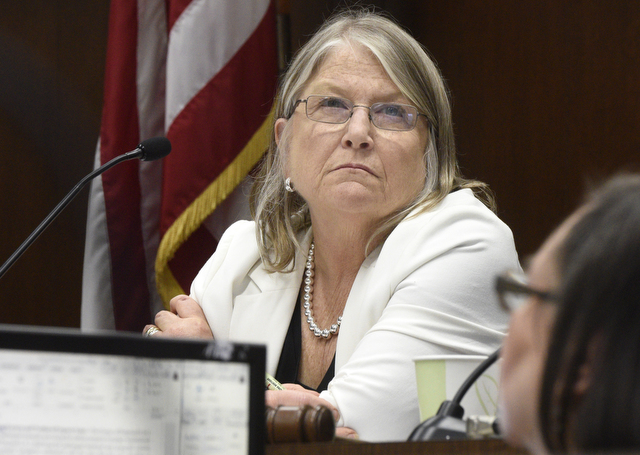Beach City Fined, Flogged over Unpermitted Work
St. George May Be Assessed $95,000 Penalty for Tree Removals, Promises to Restore Lost Habitat

For Mesa dorm developer Ed St. George, it’s proving harder to ask forgiveness than it would have been to get permission.
For five-and-a-half long hours Thursday afternoon, Santa Barbara’s Planning Commission pored over a list of unpermitted landscaping and construction work at St. George’s Beach City property next to Santa Barbara City College, focusing on the removal of 32 mature eucalyptus trees that provided overwintering shelter for monarch butterflies. The commissioners demanded to know how St. George would restore the destroyed habitat, and what legal remedies were available to the city to either remove or retroactively approve additions at the 97-unit complex.
Filling City Hall Thursday were Mesa neighbors upset with St. George for his wanton tree-chopping and build-now, permit-later attitude. He knows the rules, they said, and knows the way around them, too. Some wore eucalyptus branches around their shoulders adorned with paper Monarch cut-outs. “What [he] did was out of greed and for the almighty dollar,” charged one speaker. “This is criminal activity, and should be treated that way.” Sue Mellor wondered what kind of example it would set if the city didn’t level swift and heavy sanctions against St. George. Mary Turley highlighted the expected negative effects on fragile butterfly populations. And Bebe Longstreet, who’s served on a number of city environmental advisory bodies, proclaimed: “Misbehavior sets a precedent that it’s better to pay the consequences than be told ‘no’ by the boards and commissions that serve our community.”

Ultimately, after wrestling with complicated zoning issues around the city’s Local Coastal Plan and the state’s Coastal Act, the commissioners decided to continue the permitting discussions for another day, but not before chiding St. George themselves and deliberating a possible $95,000 fine against him. St. George chose not address the commission, instead letting his planner Laurel Perez of Suzanne Elledge Planning & Permitting Services, Inc. do the talking. “We acknowledge mistakes were made,” said Perez. But, she noted, St. George has made many other efforts to improve the property and is committed to planting new, native greenery to replace the lost trees. “I imagine a blanket of vegetation when this is all said and done,” she said.
Thursday’s hearing came out of a 2014 enforcement case against Beach City that was launched soon after St. George purchased and began renovating the seven-acre site, formerly a low-rate apartment complex called Harbor Heights Apartments. When he inherited the seven buildings there, Perez said, they came with leaky pipes, bad lighting, overflowing dumpsters, and no security. St. George has turned the complex into first-rate housing for 460 Santa Barbara City College students, Perez went on, complete with furnished rooms, Zipcars, and “community building” amenities like a bocce ball court and a long family-style picnic table.
Perez told the Planning Commission that St. George removed the 32 eucalyptus trees because they were a serious fire risk and sheltered numerous groups of homeless people. The decision was made with his tenants’ health and safety in mind, she said. St. George said the same thing in an interview before the hearing. “Those trees don’t burn,” he said, “they explode.” St. George said he’s experienced close calls at his other student housing properties in Isla Vista. “I’ve cut down numerous eucalyptus trees in my life and never had one issue,” he lamented of the backlash he’s receiving now.

The whole idea of Beach City, St. George continued, is to offer young college students a place to live downtown that comes equipped with ways to congregate and let off steam as an alternative to State Street bars. “These kids need a place to go,” he said. He and Perez both noted the city’s own Architectural Board of Review approved of the aesthetic changes to the Cliff Drive property.
Toward the middle of the public comment portion of the Planning Commission hearing, St. George received support from an SBCC architect who spoke of the pressing need for more student housing. Two older tenants also sang his praises; they were met with mumbles and groans from the rest of the audience. Late last year, St. George announced plans to build space for 1,000 more students on the property. Nearby residents have routinely complained the current tenants are responsible for nonstop noise complaints and nuisance activities.
Perez ended her comments to the commission with a detailed habitat restoration plan, which still needs approval before it can officially proceed. She highlighted the recent plantings of 60 live oak trees at the site and announced plans for 215 more native trees, as well as 3,000 other plants and shrubs — including milkweed — that would provide nectar sources and habitat for the butterflies. Perez talked about the invasive, encroaching effect of eucalyptus trees on native vegetation, citing Santa Barbara City College’s own Long Range Development Plan that calls for the removal of eucalyptus trees, as well as the city’s Urban Creeks Council, which supports replacing the species with native trees, when appropriate.
Accompanying Perez were monarch and butterfly habitat experts Dr. Daniel Meade and biologist Larry Hunt, who signed off on the restoration plan and said they were confident of its ability to re-attract the wintering butterflies. Meade explained that, given the choice, monarchs will almost always gather in native trees over eucalyptus. And their numbers haven’t suffered since the cutbacks, he claimed. In 2012, approximately 500 monarchs were counted in the Honda Valley where Beach City sits. In 2014 — before the tree removals — there were around 1,500. Even higher numbers exist today, said Meade.

Under questioning from Planning Commissioner Mike Jordan, Meade and Hunt conceded it would take approximately five-eight years for the oaks and other trees to grow large enough to provide any meaningful habitat for the butterflies. But in the meantime, they said, there is solid evidence the monarchs are congregating in remaining eucalyptus trees on the property and throughout the valley. Mostly, the two were excited about the possibility of replanting parts of Beach City with native flora. “It’s a shame that this happened,” said Hunt, “but there’s an opportunity to do something really good here.”
Commissioner June Pujo, who, along with Commissioner Deborah Schwartz, leveled the most pointed criticism at St. George, asked that the restoration plan’s monitoring program be enhanced with more details and deadlines. “The reality is that we need to get a really good [plan] in place because that is the closest thing we can get to basically righting the wrongs,” she said. Schwartz wondered if part of St. George’s $95,000 fine should go toward other environmental projects in the city. “I think the public is owed something beyond improving this private property,” she said.
The commission will reconvene on the matter at a later date that has yet to be decided.



